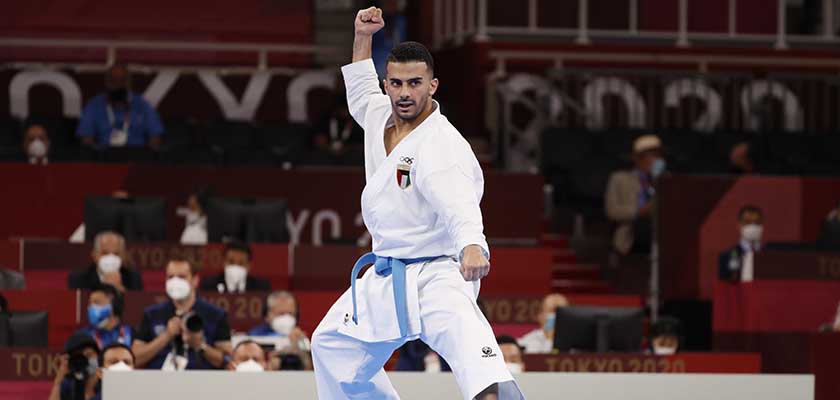Karate is a martial art that originated in Japan and is based on the use of blows with the hands, feet, elbows and knees.
The sport has two disciplines: kumite and kata. The kumite is a fight between two competitors, while the kata is a presentation of movements.
In this article, we’ll explain how the karate rules work for each type of discipline, and what the referees’ assessment criteria are.
This way, you’ll understand the complexity of the rules that regulate this martial art so beloved around the planet.
Check it out 👇
Difference between karate kata and kumite
Karate kata consists of predefined sequences of movements that simulate combat against imaginary opponents. Practitioners perform movements to showcase the precision, form and fluidity of their techniques.
It is predominantly an individual sport, in which athletes are judged on their performances.
Kumite karate involves combats between two fighters. In this discipline, practitioners face each other in controlled duels, applying punches, kicks, elbows, knees, blocks and dodges.
The aim of kumite is to apply the techniques effectively and without violence, scoring points by hitting the targets on the opponent’s body with valid blows.
So while kata emphasises the precision, form and technique of movements in individual exercises, kumite involves fighting, allowing the practical application of karate techniques in a combat context.
Both aspects are fundamental to the practice of karate, and practitioners often alternate between kata and kumite training to develop unique and consonant skills.
Karate kumite rules
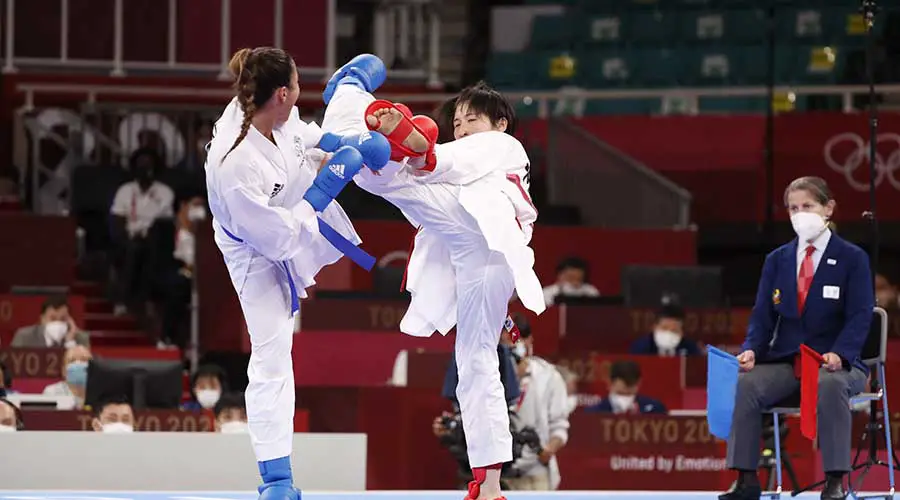
- What is the goal of karate kumite?
- How long does a karate kumite fight last?
- What does the karate kumite mat look like?
- How does a karate kumite fight work?
- Penalties in karate kumite
- What’s not allowed in karate kumite?
What is the aim of kumite karate?
In karate kumite, the aim is to score more points than your opponent. To do this, the fighter needs to strike with their hands, elbows, legs and knees.
The more solid, precise and complex the technique, the more points the athlete receives. This assessment is left to the match officials.
It is worth remembering, however, that the blows are totally controlled, i.e. they cannot be executed with excessive force or violence, as this would be contrary to the ethical principles of the Japanese martial art.
How long is a kumite karate fight?
According to karate rules, a men’s kumite fight lasts three minutes. Women’s fights last two minutes.
Before the fight begins, the athletes greet each other and wave to the referees. After that, the judges authorise the start of the fight by saying “hajime”.
What does the kumite karate mat look like?
The kumite karate mat has a square shape, with sides eight metres wide. This is where the athletes face each other.
Karate kumite scoring system
According to karate rules, fighters can score in three different ways: yuko (one point), waza-ari (two points) and ippon (three points).
When a blow is perfect, i.e. executed with precision, force and synchronisation, the referees score an ippon, which is the maximum score. If the technique is good, but not good enough for an ippon, a waza-ari or yuko can be scored.
By the way, there are four referees who assess the blows. When the technique is landed, the match is quickly stopped, as is its timer. If two or more judges agree, the point is confirmed.
At the end of regulation time, the fighter who has scored the most points wins the match. However, if an athlete leads by eight points before the clock runs out, they automatically win the match.
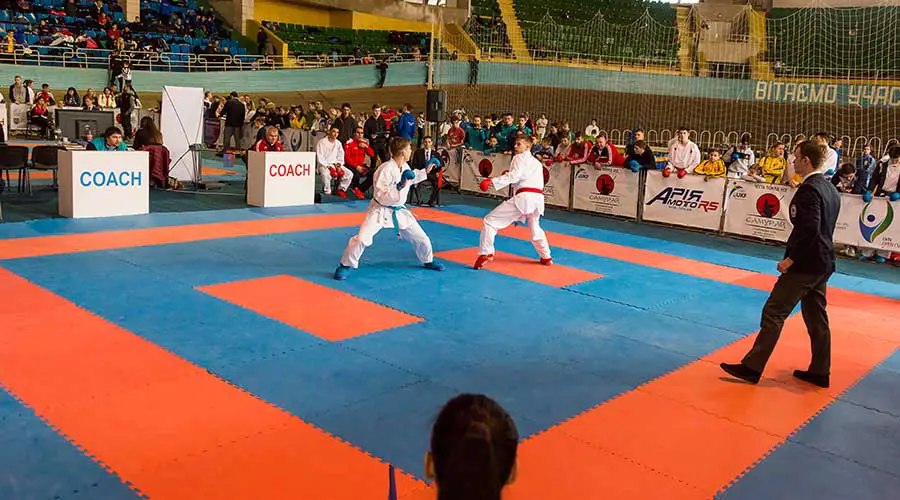
See below for the classification of blows:
- Yuko (one point): equivalent to well-executed punches to the abdomen, chest, face or back;
- Waza-ari (two points): kicks well placed on the back, abdomen, chest or sides of the torso;
- Ippon (three points): equivalent to perfect kicks to the head or sides of the neck; or a well-timed technique that causes the opponent to fall to the floor of the mat.
Penalties in kumite karate
The rules of kumite karate provide for three levels of warnings. From the lightest to the heaviest, they are: chukoku, keikoku and hansoku chui.
It’s worth emphasising, however, that these are only warnings, i.e. they don’t result in sanctions. When a fighter breaks a rule, he is warned that he is committing a fault. They need to “open their eyes”.
If the athlete continues to break the rules of karate, then they are penalised with two types of punishment: hansoku (disqualification from the fight) and shikkaku (disqualification from the entire tournament).
What’s not allowed in kumite karate?
- Contact techniques or excessive force, i.e. uncontrolled;
- Techniques that hit the throat, arms, legs, groin, joints or instep;
- Dangerous projection techniques;
- Punches to the face with an open hand;
- Leaving the mat deliberately;
- Avoiding the fight (passivity);
- Clinching, grabbing or pushing the opponent without trying to fit a technique;
- Simulating attacks with the head, knees or elbows;
- Talking or provoking the opponent;
- Not respecting the referee’s orders;
- Having an unsportsmanlike attitude.
Karate kata rules
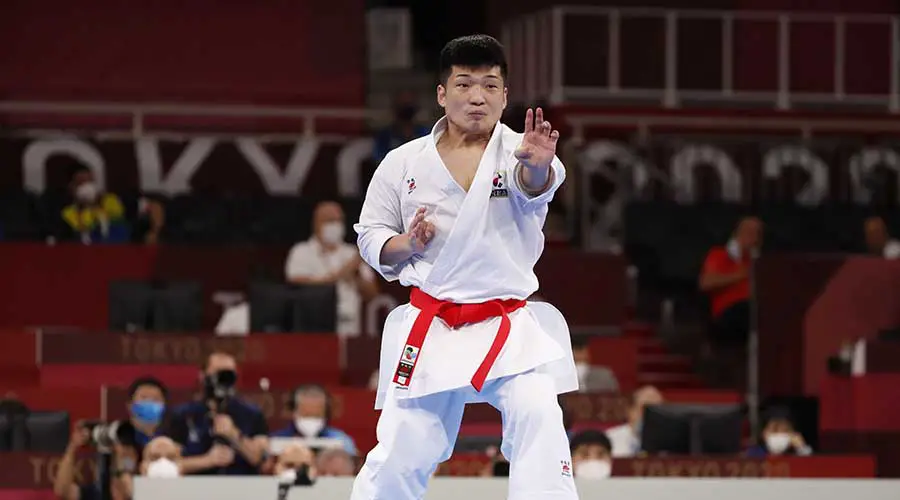
- What is the purpose of karate kata?
- Selection of kata
- Karate kata scoring system
- Karate kata penalties
- Disqualification in karate kata
What is the purpose of karate kata?
The aim of this discipline is to give a performance (individually or in a three-person team of the same sex) applying blows, techniques and movements in order to gain the highest score in the competition.
The more perfect the actions, the more points they receive from the judging panel. To do this, you need to show strength, precision, technique and synchronisation.
Selection of kata
Competitors usually choose a specific kata (style) from a list approved by the organisation overseeing the competition. Each kata has a series of movements and techniques that must be executed with precision.
Karate kata scoring system
In kata tournaments, athletes perform a certain number of performances in a limited amount of time. The length of time and number of performances varies from championship to championship.
At the end of the performances, the referees assess technical performance (70 per cent weight) and athletic performance (30 per cent weight) separately.
The judges therefore eliminate the two lowest scores and the two highest scores from each type of performance to arrive at the final average.
According to the karate kata rules, the performance scores range from 5 to 10, with 5 being the lowest possible and 10 the most perfect.
It’s worth remembering that the performance is judged from the opening salute to the closing salute, meaning that karateka need to stay focussed at all times.
Karate kata penalties
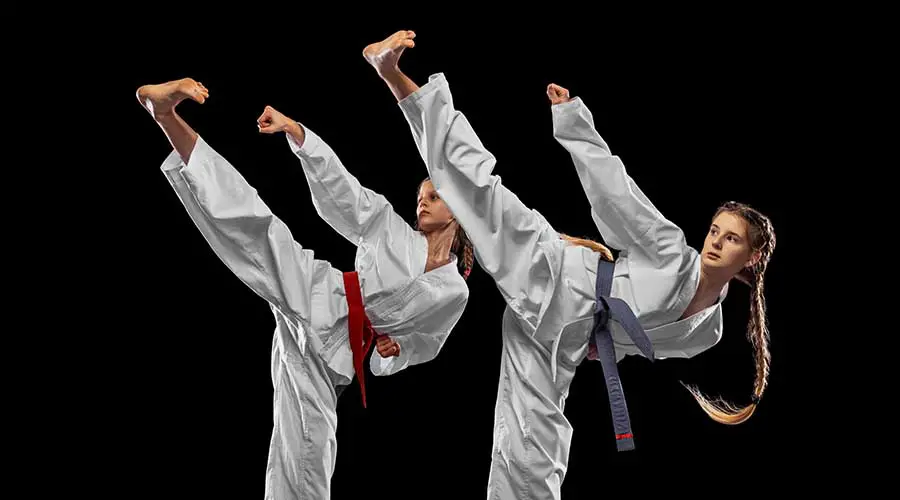
According to the rules of kata karate, there are types of actions that cause athletes to lose points in their performances. These are:
- Performing a stroke incorrectly;
- Leaving the belt loose;
- Losing your balance;
- Moves out of sync;
- Intentionally wasting time.
Disqualification in karate kata
In kata karate, there are prohibited actions that, if carried out, result in the athlete’s immediate disqualification from the performance. These are
- Announcing or performing the wrong kata;
- Interfering with the referees’ work;
- Not saluting at the beginning and end of the performance;
- Taking too long a break in the performance;
- Dropping the belt;
- Stopping the performance for no reason;
- Exceeding the time limit set for the performance;
- Not respecting the referee’s orders;
- Engaging in unsportsmanlike behaviour.
That’s it! Now you know all the rules of karate, both kumite and kata. Did you like this content? Leave your opinion in the comments! And come visit us whenever you like 👊


